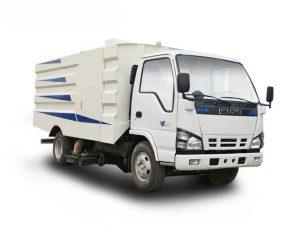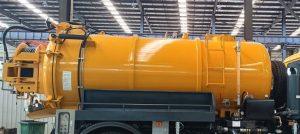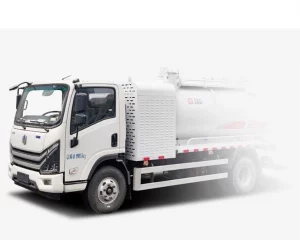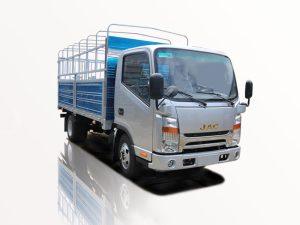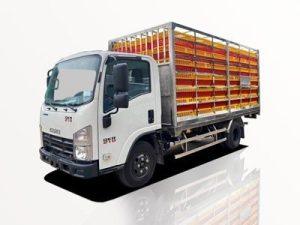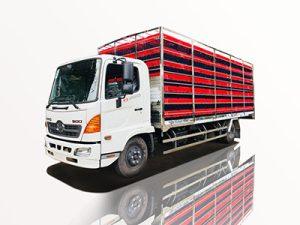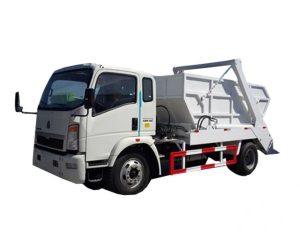Monday to Saturday - 8:00 -17:30
Extended Cab vs Crew Cab: What’s the Best Truck Configuration for You?
When it comes to selecting a pickup truck, one of the fundamental decisions you’ll face is whether to go with an extended cab or a crew cab configuration. Each option has its unique advantages and disadvantages, tailored to different needs and preferences. This article explores the differences, uses, and features of extended and crew cabs, helping you make an informed choice that best suits your lifestyle. We will discuss dimensions, seating capacity, cargo space, practical examples, and much more to give you a complete overview.
Understanding Extended Cab and Crew Cab Configurations
Your choice between an extended cab and a crew cab often depends on your specific needs for space, comfort, and utility. But first, let’s define what each term means:
What is an Extended Cab?
An extended cab is a pickup truck configuration that offers a smaller rear seating area than a crew cab. Typically, it features two full-size front doors and smaller rear doors that open against the front doors. This design allows for additional seating space behind the front seat, although it is generally tighter compared to crew cabs.
What is a Crew Cab?
A crew cab, on the other hand, is designed to maximize passenger capacity and comfort. It offers four full-sized doors and provides ample legroom and headroom for all passengers. This configuration is ideal for those who frequently transport multiple passengers.
Key Differences Between Extended Cab and Crew Cab
Seating Capacity
One of the most significant differences is in seating capacity:
| Feature | Extended Cab | Crew Cab |
|---|---|---|
| Front Seats | 2-3 | 2-3 |
| Rear Seats | 2 (smaller) | 3-5 (full-size) |
| Total Seating Capacity | 4-5 | 5-6 |
Interior Space and Comfort
When it comes to spaciousness, crew cabs take the lead. Passengers in a crew cab can enjoy a more comfortable ride, especially on longer journeys. The rear seats in crew cabs often allow for adults to sit comfortably, whereas extended cab seating may feel cramped for tall passengers.
Cab Dimensions
While dimensions can vary depending on the model and manufacturer, crew cabs generally have larger overall dimensions:
| Feature | Extended Cab | Crew Cab |
|---|---|---|
| Length | Shorter | Longer |
| Width | Similar | Similar |
| Height | Similar | Similar |
Cargo Space
Another critical aspect to consider is cargo space. Both configurations offer varying bed lengths. However, a crew cab usually has a shorter cargo bed because of the greater interior space allocated for passengers.
| Cab Type | Typical Cargo Bed Length |
|---|---|
| Extended Cab | 6.5 to 8 feet |
| Crew Cab | 5.5 to 6.5 feet |
Usage Scenarios
The choice between an extended cab and a crew cab often depends on your lifestyle and usage. Consider the following scenarios:
- Extended Cab: Best for those who need a work truck that offers occasional passenger capacity without sacrificing cargo space, making it ideal for tradespeople or those who need extra room for tools.
- Crew Cab: Ideal for families or individuals who frequently travel with passengers. Suitable for camping trips, long drives, or day-to-day commutes with family.
Pros and Cons of Extended Cab
Advantages
- More Cargo Space: Extended cabs typically come with a longer cargo bed, allowing for more storage capacity.
- Cost-Effective: Usually more affordable compared to crew cabs, making them a great budget-friendly option.
- Lighter Weight: They weigh less, which can improve fuel efficiency.
Disadvantages
- Cramped Rear Seats: Tight seating can make it uncomfortable for adult passengers.
- Limited Accessibility: Smaller rear doors can make it awkward to enter and exit the back seats.
Pros and Cons of Crew Cab
Advantages
- Spacious Interior: More legroom and comfort for passengers, making it suitable for families.
- Full-Sized Doors: Easier access to the back seats enhances convenience.
- Flexible Usage: Can function as a family vehicle without much compromise on utility.
Disadvantages
- Reduced Cargo Space: Typically has a shorter bed length, impacting cargo capacity.
- Higher Cost: More expensive than extended cab models, both in terms of purchase price and potentially insurance costs.
Fuel Efficiency Considerations
Fuel efficiency is a significant factor to consider when choosing between extended and crew cabs. Extended cabs, being lighter and often simpler in design, may provide better fuel efficiency compared to their larger crew cab counterparts. However, advances in engine technology may lessen this gap, with many crew cabs also offering competitive fuel economy. It’s important to compare specific models to make an accurate assessment.
Choosing the Right Configuration for Your Needs
Factors to Consider
When making your decision, consider the following factors:
- Passenger Capacity: How many passengers do you anticipate transporting regularly?
- Cargo Requirements: Do you need more bed space for hauling items, or is passenger comfort more crucial?
- Budget: Determine how much you are willing to spend on your truck and the ongoing costs of ownership.
- Driving Environment: Consider if you will be driving in urban areas or off-road where maneuverability may be affected by cab size.
Practical Examples
Let’s look at a few real-world applications to help illuminate the differences:
Example 1: Work Use
John is a contractor who often travels with tools and needs room for a few employees occasionally. An extended cab truck provides the cargo space he needs for his equipment while allowing him to transport additional staff when necessary. In this case, the extended cab meets his work requirements.
Example 2: Family Use
Mary has three children and frequently takes road trips. A crew cab truck is perfect for her, as it allows comfortable seating for all family members and room for gear in the back. The space can also accommodate friends for outings. Here, the crew cab configuration significantly improves family travels.
Comparative Cost Analysis
When comparing costs, take into account not just the initial purchase but also long-term expenses:
| Cost Item | Extended Cab | Crew Cab |
|---|---|---|
| Base Price | Lower | Higher |
| Insurance Rates | Lower | Higher |
| Fuel Efficiency | Better | Comparable |
Frequently Asked Questions (FAQs)
1. Which is better for families: extended cab or crew cab?
Crew cabs are generally better for families as they provide more space and comfort for passengers, making longer journeys more enjoyable.
2. Can adults sit comfortably in an extended cab?
While it is possible for adults to sit in an extended cab, the space can be cramped, making it less comfortable for taller individuals.
3. Do truck beds differ in size with extended/cab configurations?
Yes, extended cabs typically offer longer cargo beds compared to crew cabs, which may prioritize passenger space over cargo room.
4. Is it worth paying more for a crew cab?
If you frequently transport passengers and value comfort, a crew cab may be worth the additional cost. However, for those needing more cargo space, an extended cab may be more suitable.
5. What are the general dimensions of each cab type?
Dimensions vary by model, but extended cabs are usually shorter, focusing on storage, while crew cabs provide more room inside for passengers.
6. Which cab type has better resale value?
This can depend on market demand, but crew cabs often maintain better resale value due to their versatility and popularity among family vehicle buyers.


